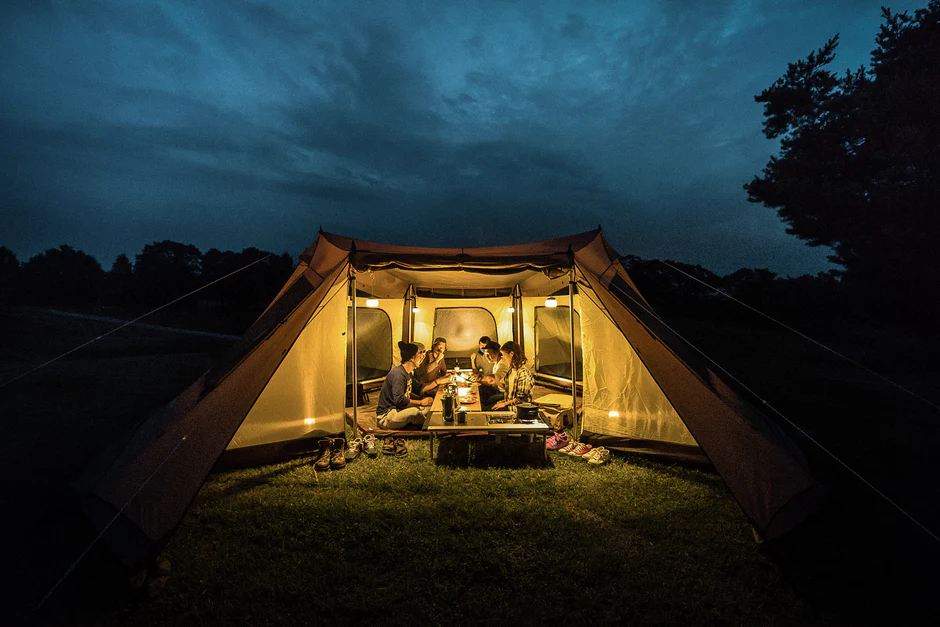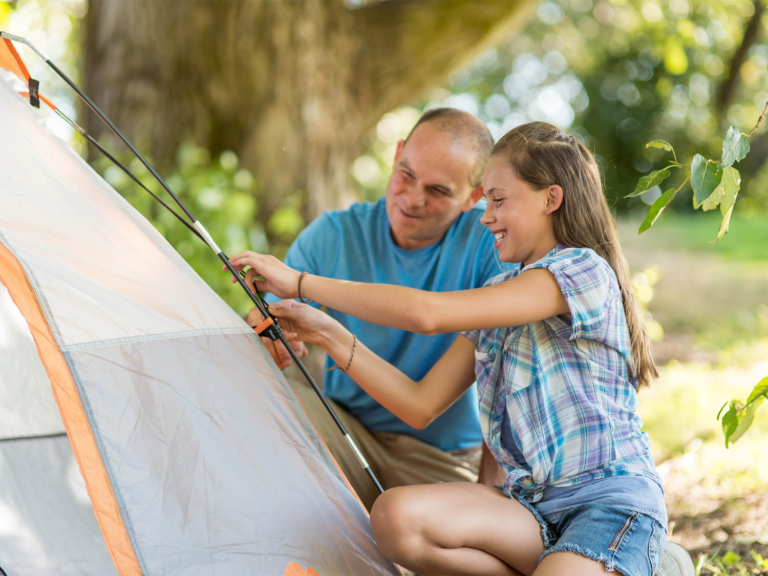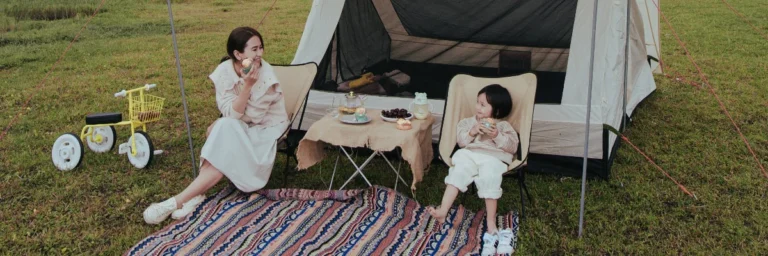Camping is a great way to relax, make lifelong memories, and get in touch with nature. How to guarantee a good experience, particularly when sleeping in a tent, is a worry for a lot of people. This book will teach you how to camp properly in a tent with advice on equipment, setup, and comfort-enhancing strategies, whether you’re new to camping or want to improve your outdoor experience.
Table of Contents
- Choose the Right Tent
- Pick the Perfect Campsite
- Invest in a Comfortable Sleeping Setup
- Stay Warm and Dry
- Organize Your Tent Efficiently
- Make the Most of Tent Accessories
- Essential Tips for Extra Comfort
1. Choose the Right Tent
The foundation of a comfortable camping experience starts with your tent.
Key Features to Look For:
- Size: Pick a tent that’s slightly larger than your group size. For example, a 4-person tent for 2-3 people offers extra space for gear and movement.
- Weatherproofing: Ensure the tent has waterproof materials, a durable rainfly, and sturdy poles for stability.
- Ventilation: Mesh panels and windows reduce condensation and improve airflow.
Pro Tip:
Consider tents with multiple rooms or vestibules if you’re camping with family or friends. This helps in organizing space and maintaining privacy.

2. Pick the Perfect Campsite
Location matters! A well-chosen campsite can make or break your comfort level.
Tips for Selecting a Campsite:
- Flat Ground: Look for level, debris-free terrain to pitch your tent. Avoid slopes or rocky areas.
- Natural Windbreaks: Position your tent near trees or boulders to shield against strong winds.
- Dry Area: Avoid low spots where rainwater might collect.
Pro Tip:
Always check for hazards like falling branches or uneven ground to avoid discomfort and ensure safety.
3. Invest in a Comfortable Sleeping Setup
A good night’s sleep is crucial for enjoying your camping trip.
Must-Have Gear:
- Sleeping Pads or Air Mattresses: These provide insulation and cushion. Choose an inflatable mattress for extra plushness or foam pads for simplicity.
- Sleeping Bag: Opt for a sleeping bag rated for the expected temperature range. Mummy bags are great for cold nights, while rectangular ones offer more space.
- Pillows: Bring a camping pillow or stuff a pillowcase with clothes for comfort.
Pro Tip:
Lay a tent carpet or foam mat under your sleeping setup for added insulation and comfort.

4. Stay Warm and Dry
Weather can be unpredictable, but preparation keeps you cozy.
Tips for Staying Warm:
- Layer Up: Wear moisture-wicking base layers, and add fleece or insulated layers for colder nights.
- Keep Dry: Use a rainfly, seam seal your tent, and store wet gear outside to avoid dampness.
- Hot Water Bottle Hack: Fill a bottle with warm water and place it in your sleeping bag for extra warmth.
5. Organize Your Tent Efficiently
An organized tent ensures comfort and eliminates the stress of clutter.
How to Organize:
- Gear Storage: Use hanging organizers or gear lofts to store small items.
- Shoes Outside: Keep shoes in a vestibule or a designated mat outside to avoid dirt inside.
- Zoning: Assign specific areas for sleeping, gear, and relaxation to maintain order.
Pro Tip:
Pack lightweight collapsible shelves or bins for easy storage inside the tent.
6. Make the Most of Tent Accessories
Accessories can elevate your tent camping experience.
Must-Have Accessories:
- Lighting: Bring headlamps, lanterns, or string lights for cozy illumination.
- Tent Fans: Battery-operated fans improve airflow during hot weather.
- Comfort Items: Add portable camping chairs, rugs, or even a small foldable table for convenience.
Pro Tip:
Solar-powered gadgets like phone chargers or lanterns are eco-friendly and handy for outdoor adventures.

7. Essential Tips for Extra Comfort
Little adjustments can make a big difference.
- Bring Earplugs: Campsites can be noisy, especially with wildlife or nearby campers.
- Use a Groundsheet: Place a tarp under your tent to prevent moisture from seeping in.
- Pack for Convenience: Keep frequently used items, like a flashlight or water bottle, within easy reach.
- Personal Touches: Add cozy blankets, familiar items from home, or even aromatherapy sprays to create a comfortable ambiance.
Conclusion
Camping in a tent doesn’t have to mean sacrificing comfort. By choosing the right gear, selecting a great campsite, and following these tips, you can ensure a cozy and enjoyable outdoor experience. Whether you’re a seasoned camper or just starting out, the key to comfort lies in thoughtful preparation and attention to details.
So, pack your gear, head out into the wild, and enjoy camping like never before!






Hi, this is a comment.
To get started with moderating, editing, and deleting comments, please visit the Comments screen in the dashboard.
Commenter avatars come from Gravatar.